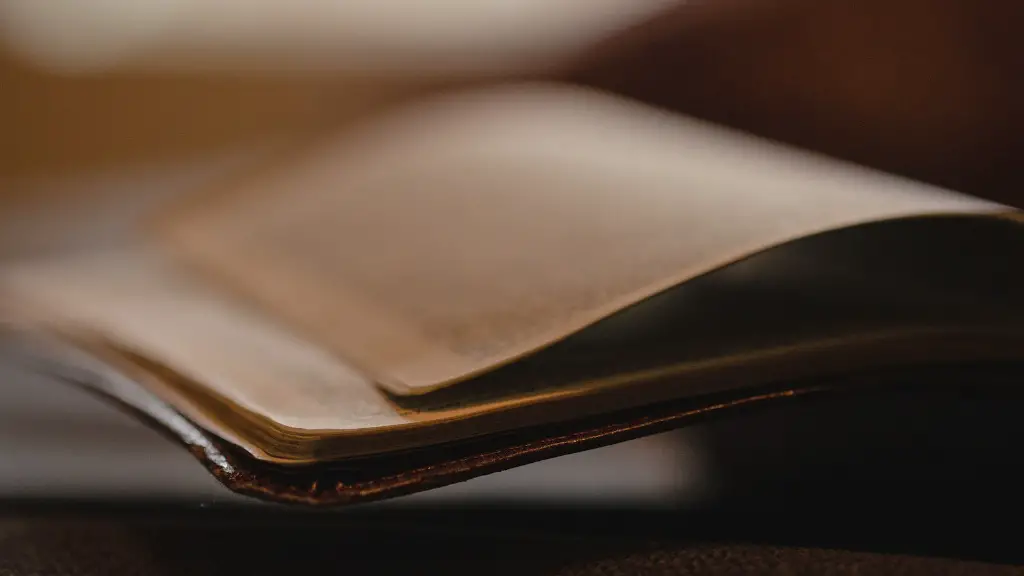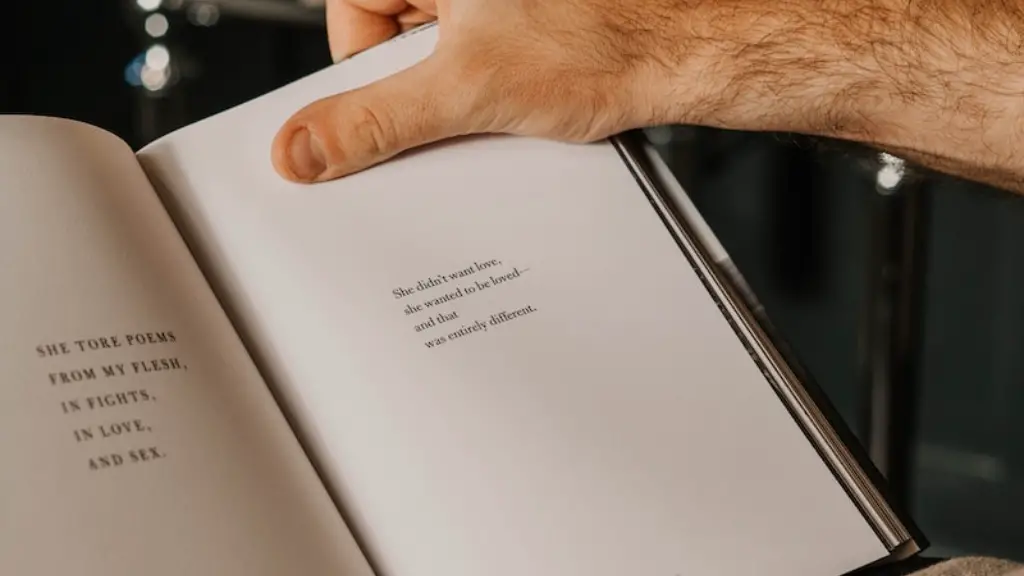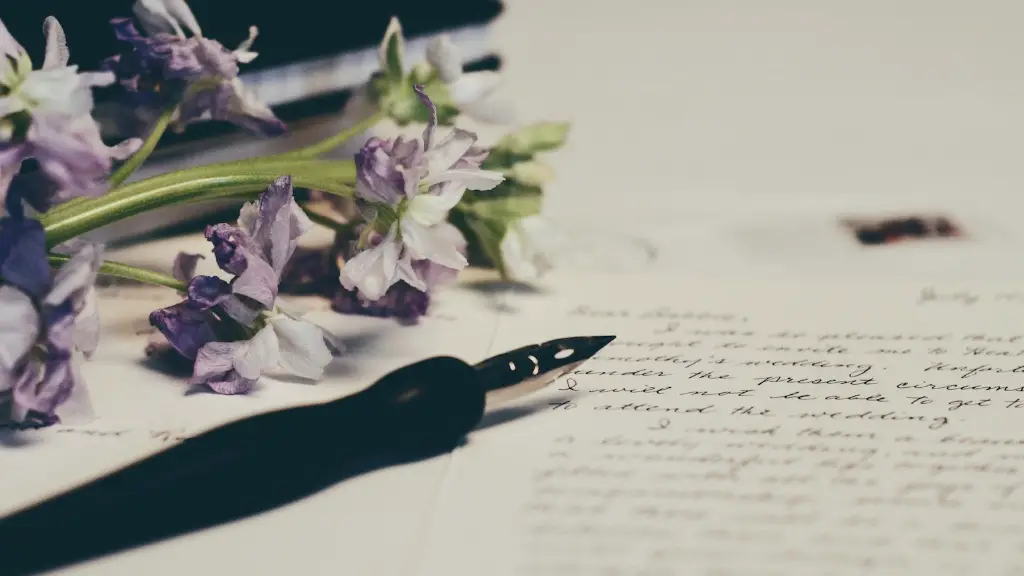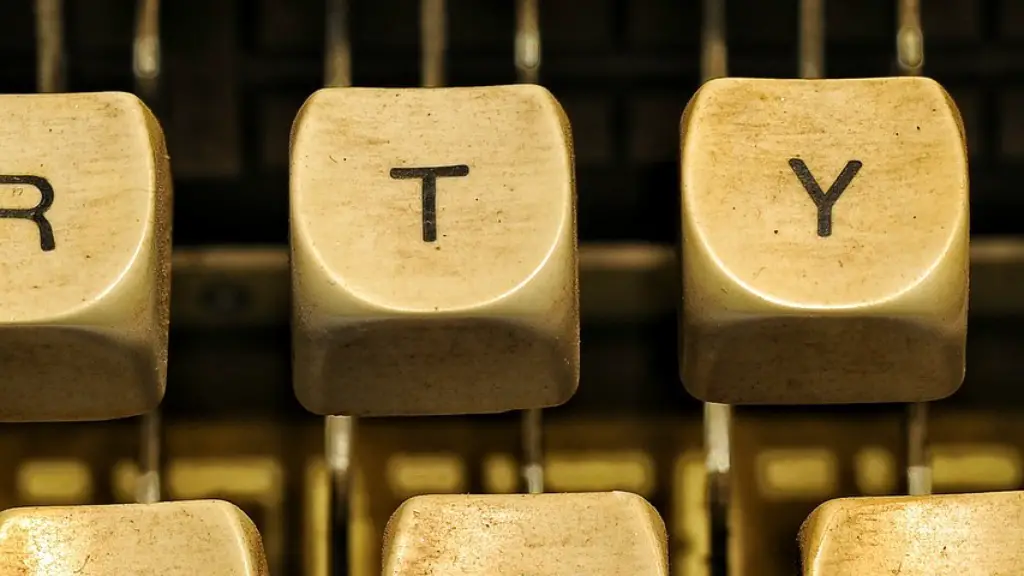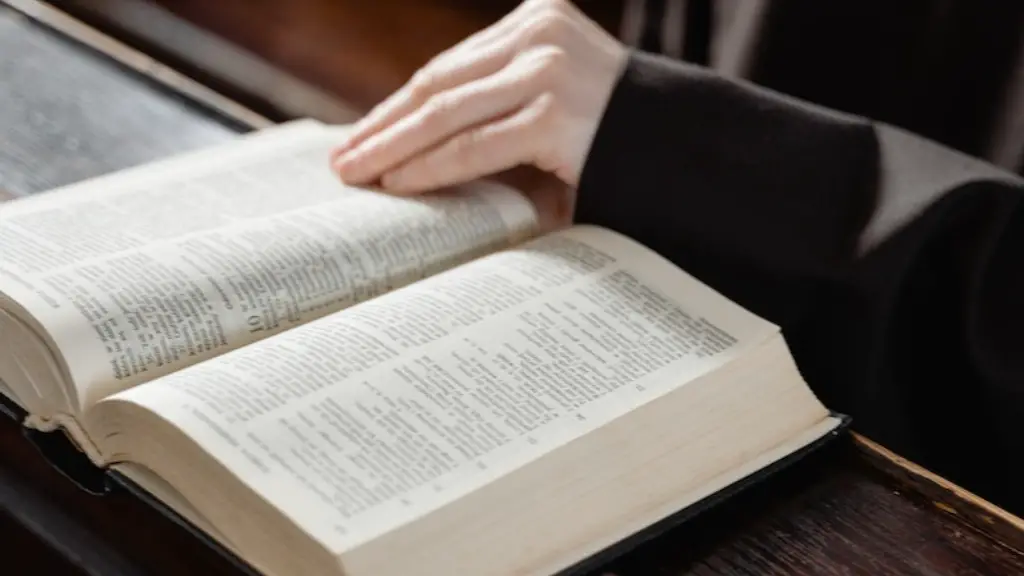Emily Dickinson often uses slant rhyme in her poems as a way to create a more lyrical effect. By using words that share similar sound but have different meanings, she is able to create a more musical quality in herwriting. This use of slant rhyme also allows Dickinson to add more depth and layers of meaning to her poems. In many of her poems, Dickinson uses slant rhyme to create a sense of suspense or mystery, which can add to the overall mood and tone of the poem.
Emily Dickinson uses slant rhyme as a way of adding musicality to her poems while also creating a sense of ambiguity. This technique allows her to explore different meanings and emotions within her work. Additionally, slant rhyme can create a sense of tension and excitement, adding to the overall effect of the poem.
Did Emily Dickinson use slant rhyme?
Slant rhyme, also known as partial rhyme, near rhyme, oblique rhyme, or off rhyme, is a type of rhyme in which the rhyming words are not identical, but rather similar in sound. Emily Dickinson is known for using slant rhyme in her poetry to create a more subtle effect than traditional perfect rhyme. In “Not any higher stands the Grave,” she uses a perfect rhyme with “Men” and “Ten” in the first stanza, then breaks expectations by using a slant rhyme with “Queen” and “Afternoon” in the second. This creates a more nuanced and complex poem that engages the reader on a deeper level.
Slant/half rhyme is often included to create a certain rhythm to a poem without using direct rhyme. Perfect rhyme often creates a singsong effect in the poetry that some poets may want to avoid and half rhyme is a good alternative to use when still wanting some rhythm.
What type of rhyme does Emily Dickinson use
Emily Dickinson’s poetry largely employs an ABCB rhyme scheme. This means that in a stanza of four lines, the second and fourth lines rhyme with each other, but the first and third lines do not rhyme with each other or with the second and fourth lines. This rhyme scheme is often used in ballads and helps to create a sense of rhythm and movement in the poem.
Common meter is often associated with Dickinson’s verse, which is defined by alternating lines of eight syllables and six syllables (8686). This type of meter is often used in poetry and song lyrics, and can create a sing-song or nursery rhyme-like effect. Dickinson often used common meter in her poems to create a sense of rhythm and flow, and to emphasize certain words or phrases.
What is Emily Dickinson’s style of poetry?
Emily Dickinson was an American poet who was born in 1830 and died in 1886. She is best known for her use of slant-rhyme, conceits, and unconventional punctuation, as well as her near-legendary reclusive habits. Dickinson was part of a prominent Amherst, Massachusetts family.
Emily Dickinson is considered one of the leading 19th-century American poets. She is known for her bold original verse, which stands out for its epigrammatic compression, haunting personal voice, and enigmatic brilliance.
How does slant rhyme differ from exact rhyme?
A half rhyme is a type of rhyme that is not exact, but close. The words sound similar, but not identical. This type of rhyme is sometimes called a lazy rhyme, near-rhyme, or slant rhyme.
When information is distorted, it can be difficult to trust anything that is said. This is especially true if the person doing the distortion is trying to reflect a particular viewpoint. This can make it difficult to get accurate information about what is going on.
Why does rhyme effect a poem
Rhyme is an important element in poetry that can create a lasting effect on the audience. A poet can use rhyme to evoke emotions from their audience. Rhyme tends to be predictable but pleasurable. As such, it can create suspense or dramatic tension.
There are several reasons why writers use slant rhyme. One reason is that it can create a sense of unity and cohesion within a poem. By repeating sounds according to a pattern, slant rhyme can help to bind a poem together and give it a sense of coherence. Additionally, slant rhyme can help to add interest and variety to a poem. Rather than sticking to perfect rhymes, which can sometimes sound clunky or forced, slant rhyme allows for a more subtle and creative approach to rhyming. Finally, slant rhyme can be used to create a sense of humor or playfulness in a poem. By using words that are almost, but not quite, rhymes, writers can add a touch of irony or wit to their work.
What is slant rhyme in a poem?
Half rhyme is a type of rhyme that occurs when two words share only their final consonant sounds. This type of rhyme is also sometimes called near rhyme, slant rhyme, or oblique rhyme. Half rhyme can add a nice lilting quality to a poem or piece of writing, and can help to create a sense of sonic unity throughout a text.
The dashes in a poem can create silence and force the reader to take a break. This is called a “musical device” by Johnson. The pause created by the dash mimics the effect of a comma, and can coax the reader into pausing.
What are the most significant features of Emily Dickinson’s poems
Emily Dickinson is one of the most renowned poets in American history. Her poems are typically short and concise, yet they are packed with powerful emotion and meaning. Dickinson often wrote about unconventional topics such as death and loss, which gave her poems a distinctive mood. Many of her poems are untitled, which reinforces the idea of her individualism. Dickinson was also influenced by transcendentalism, which is reflected in her work. Overall, her poems offer insights into the human experience that are both realistic and mystical.
Emily Dickinson is a unique poet in that she has a couple of different tones in her poetry. She has death and suffering poems, in which she is quite pessimistic and depressing, very dark and gloomy. But she also has some poems that read like tiny essays with a cognition above and beyond all other poets. This duality in her poetry is what makes her so interesting and worthwhile to read.
What are two common themes in Dickinson’s poetry?
While Emily Dickinson may have addressed some of the same literary themes as her contemporaries, she did so in her own unique way. Scholars have noted that her poems often explore the darker, more difficult aspects of these themes, which set her apart from other writers of her time. As Miller says, Dickinson’s poems offer a “different” perspective on love, death, and other topics, and it is this originality that has made her one of the most respected and beloved poets in American history.
Emily Dickinson’s writing style is dominated by her use of dashes, dots, and unconventional capitalization. This, in addition to her vivid imagery and idiosyncratic vocabulary, makes her style unique. Instead of using pentameter, she was more inclined to use trimester, tetrameter, and even dimeter at times. This gave her poems a very different rhythm from those of her contemporaries.
Conclusion
There are a few possible explanations for why Emily Dickinson might have used slant rhyme in her poems. One reason could be that she wanted to create a certain musicality or atmosphere in her poems, and slant rhyme helped her to achieve that. Another possibility is that she was deliberately trying to create a sense of disjointedness or unease in her poems, and slant rhyme was a way to help convey that. It’s also possible that she simply liked the way that slant rhyme sounded, or that she felt it added a certain level of interest or difficulty to her poems. Ultimately, we can’t know for sure why Dickinson used slant rhyme, but it’s clear that she did so deliberately and for a specific purpose.
Slant rhyme, also known as partial rhyme, is a type of rhyme in which the end words share some, but not all, of their sounds. Emily Dickinson is known for her clever use of slant rhyme, which can add an extra layer of meaning to her poems. In the poem “Tell all the Truth but tell it slant,” for example, the slant rhyme between “truth” and “slant” reinforces the poem’s theme of the need to be honest without being too blunt. Slant rhyme can also create a more musical or lyrical quality in a poem, as in Dickinson’s “I taste a liquor never brewed.” In this poem, the slant rhymes between “brewed” and “voided” and “meek” and “seek” give the poem a singsong quality that mirrors the speaker’s intoxication. Ultimately, Emily Dickinson’s use of slant rhyme is just one of the many literary devices she employs to create her distinctively beautiful and thought-provoking poems.
